Business metrics are important for business to keep a track of how it is performing
How do you know if your marketing efforts are paying off?
Whether you are a small business owner or a large business, it is very important to track business metrics that aligns with your business goals
Tracking both offline & online metrics will help you to make informed decisions.
It helps you to understand what is working & what is not working and what to focus on as a business owner
But, metrics are of no importance if you cannot add value to customer’s life.
Today we will share with you 30 Business metrics you can track for both online & offline business
Table of Contents
The World after 2020
Our world has changed since 2020.
More than half the world population is on the internet.
The way people work has changed, the way we live has changed, the way we do shopping has changed.
The Internet & being online has changed people’s behaviour in everything they do.
It has changed the way we interact. The way we shop.
World has become digital in a short span of time.
Most traditional businesses have moved online and few are working on to move online to follow the trend
Your customers are spending more & more time online, businesses have to be at the place where their potential customers are.
As a business owner whether your presence is online or offline or both, it is critical to track how your business is performing
But the big question is what to track?
We share top 30 business metrics that you can track that matters for your business performance
Learn : How your business can benefit by going online
30 Business Metrics to track that Matters

Don’t worry we are here to help you with some of the business metrics that you can keep a track to better understand both your business & customers
Remember every business is different & what metrics you track differs from industry to industry
The business metrics you track also depends on what is important to you & your business.
Today we share both offline & online business metrics that can help your business to understand your customers & overall business performance
Metrics play a crucial role in helping small businesses measure their performance and make informed decisions.
These metrics can be broadly categorised into offline and online metrics.
Many businesses use ratio analysis to monitor their financial health
In present day, financial ratios are important tool for business & investors
You can use these ratios not only to study your own business but also other businesses in the industry
It is a great way to monitor & analyse the health of your business to support the growth of your company
It also tells you how you stack against your competition
Here’s a breakdown of some 30 key metrics for small businesses for both offline & Online business along with some financial ratios you can track for your company & others
Business Offline Metrics to track
- Sales Revenue: This is the most fundamental metric for small businesses. It measures the total income generated from your products or services.
- Customer Acquisition Cost (CAC): Calculate how much it costs to acquire a new customer, including marketing and sales expenses
- Customer Retention Rate: Track the percentage of customers who continue to do business with you over time. A higher retention rate is usually more cost-effective than constantly acquiring new customers.
- Inventory Turnover: You can measure how quickly your inventory is sold and replaced. This helps you manage cash flow and reduce carrying costs.
- Gross Profit Margin: This metric calculates the percentage of revenue that remains after subtracting the cost of goods sold. It’s an indicator of profitability.
- Operating Expenses: Keep tabs on your business’s operating expenses, such as rent, utilities, and salaries, to ensure they’re in check.
- Break-Even Point: Identify the point at which your total revenue covers your total expenses, marking the point where you begin to make a profit.
- Customer Satisfaction and Feedback: Collect and analyse customer feedback through surveys, reviews, and direct interactions to gauge customer satisfaction and make improvements.
- Cash Flow: Cash flow measures the movement of money in and out of your business. It’s essential for small businesses to ensure they have enough cash to cover operational expenses, pay suppliers, and invest in growth.
- Average Transaction Value (ATV): ATV is the average amount a customer spends in a single transaction at your business. Tracking this metric helps you identify opportunities to increase revenue by encouraging customers to spend more during each visit such as up-selling
Business Online Metrics to track
- Website Traffic: Monitor the number of visitors to your website. Tools like Google Analytics can provide valuable insights into user behaviour.
- Conversion Rate: Measure the percentage of website visitors who take a desired action, such as making a purchase or signing up for a newsletter.
- Click-Through Rate (CTR): In online advertising, CTR measures the percentage of users who click on an ad. It’s crucial for assessing ad campaign effectiveness.
- Email Open Rate: For email marketing, track how many recipients open your emails. A higher open rate indicates more engaging content.
- Social Media Engagement: Analyse likes, shares, comments, and follows on social media platforms to gauge your online presence and audience engagement
- Cost Per Click (CPC) and Cost Per Acquisition (CPA): In online advertising, monitor the cost of each click or the cost to acquire a new customer through paid campaigns
- Search Engine Ranking: Track your website’s position in search engine results pages (SERPs) for relevant keywords to assess your SEO efforts.
- Customer Lifetime Value (CLV): Estimate the total revenue a customer is expected to generate over their lifetime with your business. This helps you make more informed marketing decisions.
- Online Reviews and Ratings: Monitor and respond to online reviews on platforms like Google, Yelp, or industry-specific websites to manage your online reputation.
- Email List Growth: Measure the growth of your email subscriber list over time as it’s a valuable asset for marketing and communication.
You can use Google Analytics to track your online metrics that are important for your business
GA4 comes with lot of benefits when it comes to tracking your business metrics
Financial Metrics or Analysis or Ratios
Looking at the health of your company and to tap opportunities to improve & scale, it is very important to study these financial ratios
These ratios don’t work in isolation but depends on other performance indicators which are important for your business.
These ratios gives you a rough sketch of the financial health, profitability, capital structure, solvency,
weaknesses of an organisation etc
Conclusion & insightful information can be drawn through such analysis
Insightful information helps you as a business owner to make informed decisions
Whether an organisation is financially sound or not, how much shock absorbing capacity it has,
whether its prospect is good or bleak that can adjudged with the help of ratio analysis
These tools can be compared with blood pressure, temperature or pulse of the human body.
As a medical expert diagnose the diseases and come to a conclusion as to the health of an individual with the
help of such symptoms, similarly a financial analyst makes a critical assessment of organisation’s financial
health with the help of different ratios
Both business & investors can use these ratios to gain valuable insight into different aspect of company’s financial performance & risk
Your business can also compare your company’s financial ratios with industry average to see how you compare to other businesses in your sectors
Businesses typically publish the financial ratios as a part of their annual or quarterly financial reports
These ratios are part of 30 Business metrics you can track to give meaning to your business performance
Here we share with you Top 10 Financial Ratios for assessing your business or any business or company’s financial health & performance
Current Ratio
It is used for measuring short term liquidity or solvency.
Whether the current assets of the firm are sufficient to meets its current liabilities that is assessed through the current ratio
- A comparatively higher current ratio indicates good liquidity & satisfactory debt repayment capacity of the firm
- Low current ratio than the standard indicates , bad liquidy, less capital & unsatisfactory repayment capacity of the firm
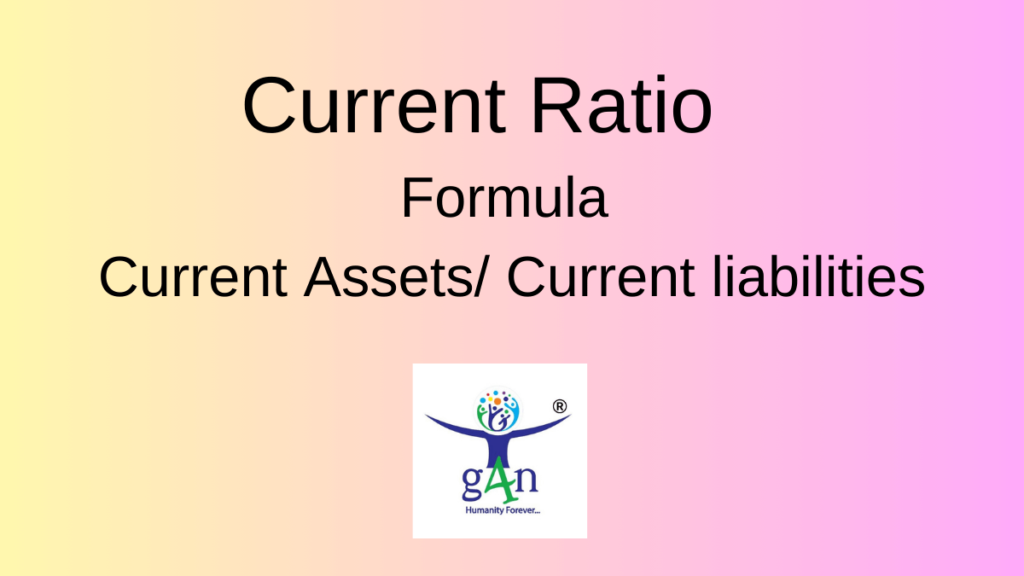
Quick Ratio or Liquid Ratio or Acid Test Ratio
It is used to measure short term liquidity or solvency. Quick ratio is useful to verify the trend indicated by the current ratio
- A high liquid ratio along with current ratio indicates a good term solvency or debt repayment capacity of the firm
- A high liquid ratio ensures the safety of the investment of creditors
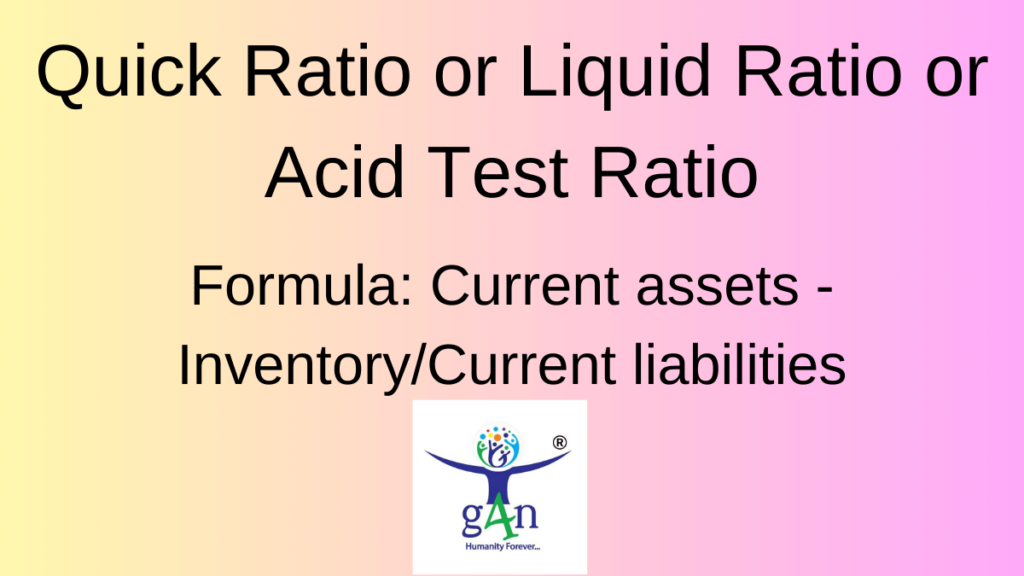
Gross Profit or Gross Margin Ratio
You can measure profitability & managerial efficiency. The relation between sales & gross earnings is explained through this ratio.
It shows profit earned ( as a percentage of sales) after matching direct expenses
Ideal form: Generally Gross profit in the range of 25% to 30% is taken as an acceptable norm
- A higher gross profit ratio indicates more profitability & managerial efficiency
- Firm with low gross profit ratio or negative ratio indicates a company is in an awkward financial condition & its direct costs are more than the turnover.
- It also indicates that the firm is not in a position to meet indirect cost
And remember the gross profit ratio of a single year may not truly reveal the operating efficiency of the firm.
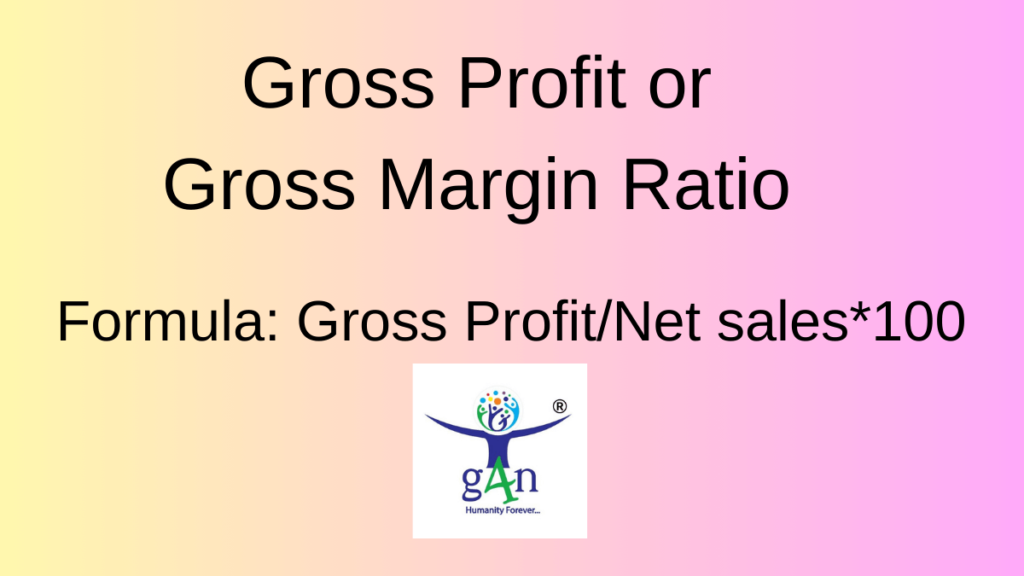
Net Profit or Net Margin ratio
You can measure the overall profitability & efficiency of the management in generating additional revenue over & above the total operating cost
- The net profit ratio shows the net contributions made by sales of Re 1 to the owners fund.
- A higher net profit ratio shows managerial efficiency & expresses how much the total revenue earned is more than the total expense incurred.
- If the firm has low net profit ratio in spite of having high gross profit ratio , it means that it has excessive indirect expenses on which has not been able to enforce control
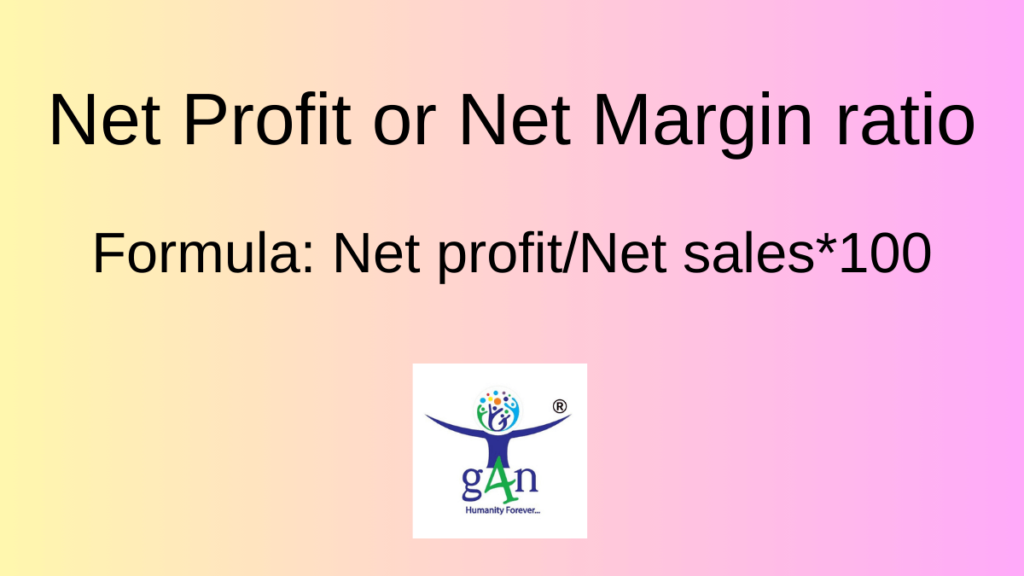
Operating Profit Ratio
Like gross profit & net profit ratio this ratio is used to make in depth analysis of profitability & managerial efficiency.
It explains the relationship between the operating profit & net sales & discloses the pure profit arising out of only main business activities of the firm
- If operating profit ratio is used with other profitability ratios, it provides more meaningful interpretations of a firm;s profitability & managerial efficiency
- Low operating profit ratio is not a healthy sign of the firm’s business policy & the performance is below expected level
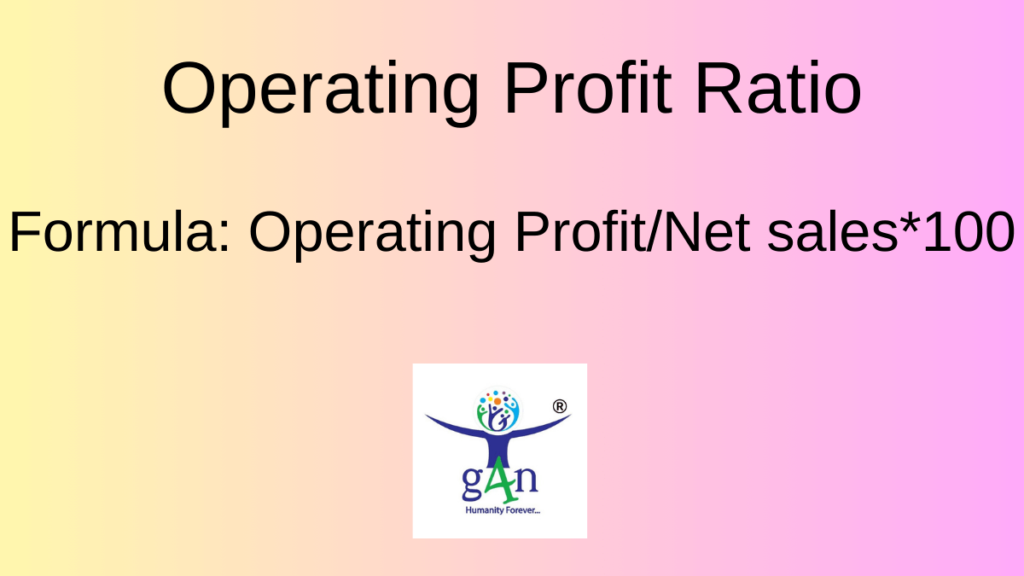
Return on Capital employed
You can analyse profitability of the firm from the point of view of funds employed. & to evaluate the efficiency of the management
It explains the relationship between the operating profit i:e net profit before interest & tax & net or gross capital employed in the firm
- It is the real test of profitability & efficiency. From viewpoint of shareholders & the management a high return on capital employed is always favourable
- If the cost of long term borrowing is lower than the return on capital employed , return to shareholders would increase
- A high ratio indicates the firm is in stable position & has a good future prospect

Debt to equity Ratio
It is a very important ratio.
You can make a thorough analysis of long term solvency, capital structure & risk , financial stability & managerial efficiency.
The extent of the owner’s investment in relation to the use of debt capital is revealed by this ratio.
You can measure the risk involved in the capital structure
- A too high ratio reveals more investment of loan capital than equity capital in meeting the requirement of finance of the firm. It is highly risky because of higher claim of the outsiders of the firm
- And a low ratio indicates more use of equity capital than the debt capital. Lower the debt means lower are the interest & repayment burden of the firm

Price Earning Ratio
It is used to analyse the activity, managerial efficiency, profitability & return on owner’s investment
Helps you to ascertain the true value of each equity share.
It indicates investors expectations about the firm’s performance
- A high price earning ratio indicates either a fall in earnings per share or an increase in market price per share. It indicates high managerial efficiency , high profitability and good market reputation
- A low price earning ratio not caused by an increased earning indicates reduced market price per share. It also reveals a low level of managerial efficiency & profitability. It is against the interest of shareholders
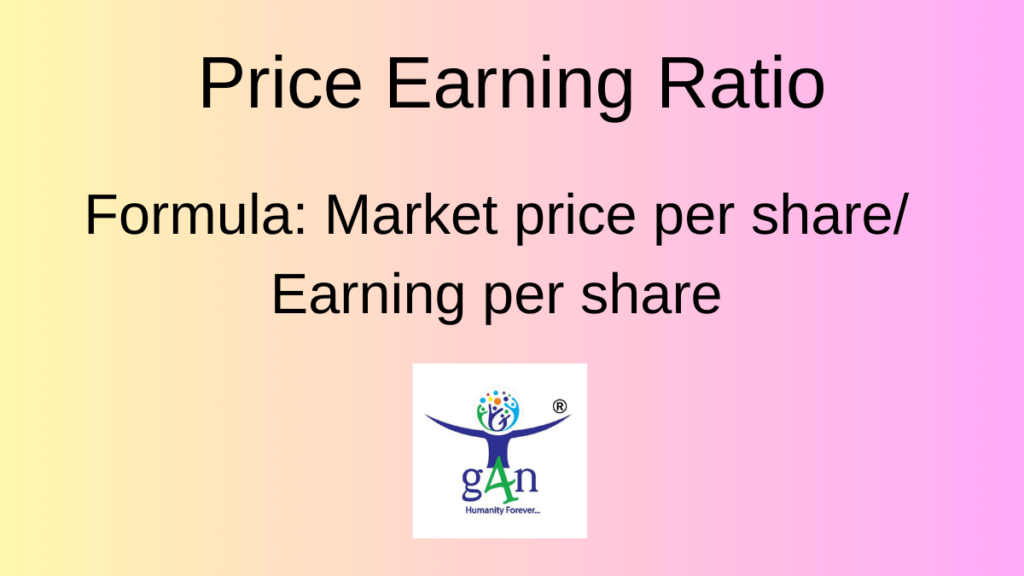
Earning per share Ratio
Earnings per share (EPS) is calculated as a company’s profit divided by the outstanding shares of its common stock.
The resulting number serves as an indicator of a company’s profitability
- A higher EPS indicates greater value because investors will pay more for a company’s shares if they think the company has higher profits relative to its share price.
- Earnings per share (EPS) is a company’s net profit divided by the number of common shares it has outstanding.
- Like other financial metrics, earnings per share is most valuable when compared against competitor metrics, companies of the same industry, or across a period of time
- The EPS formula indicates a company’s ability to produce net profits for common shareholders.
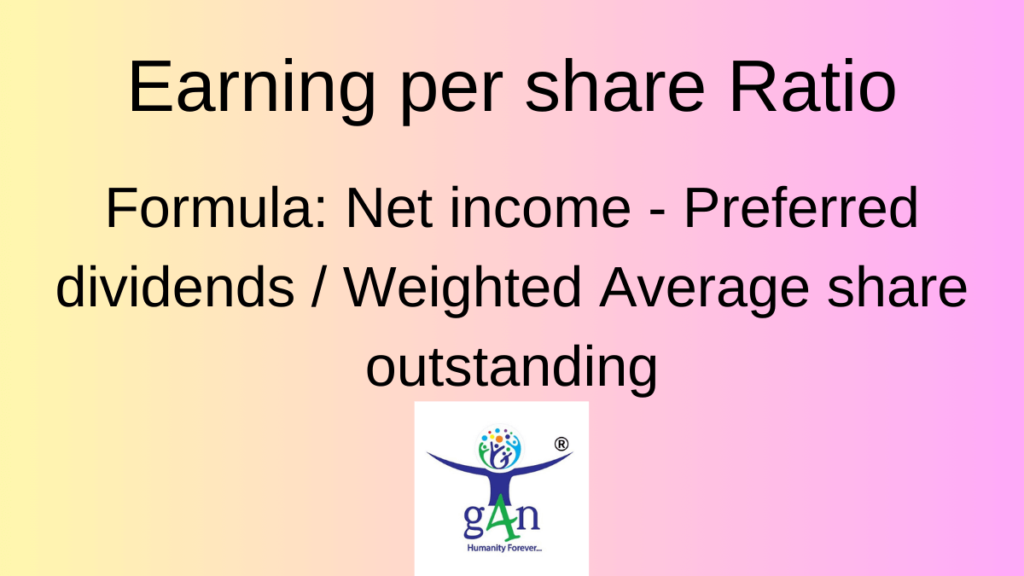
Return on total assets
You can use this ratio to measure profitability of the firm in terms of assets employed in the firm.
It is also an yardstick of measuring managerial efficiency in relation to the utilisation of assets
- If you have a high ratio, it indicates high profitability & a good overall efficiency
- Low ratio reveals poor deployment of assets and bad managerial efficiency
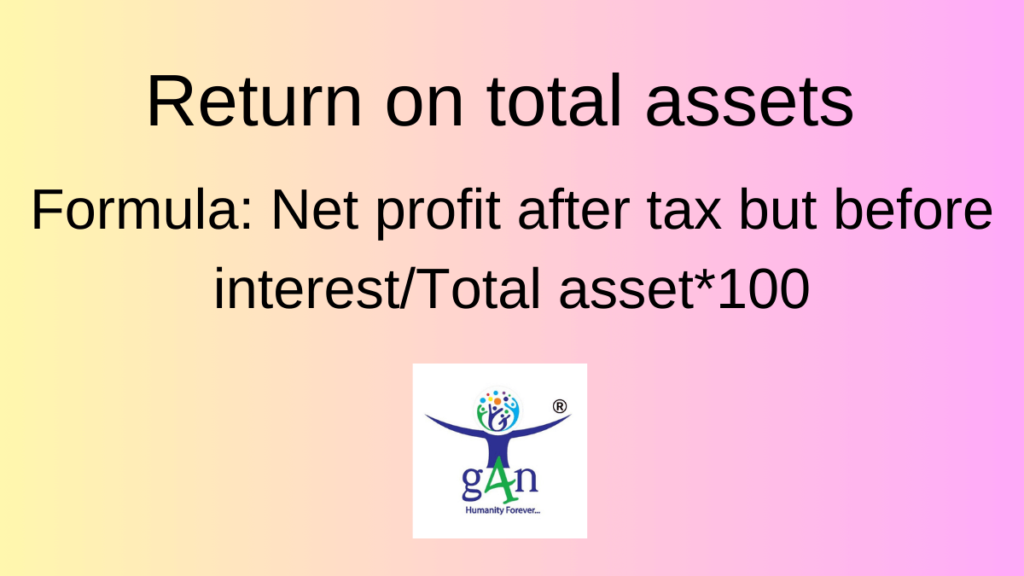
It can be undoubtedly said that ratio analysis is one of the widely used & popular financial techniques of the modern times.
But in many cases its effective application largely depends on the expertise and analytical skills of the interpreter
It is not possible to obtain the expected utility from ratio analysis unless the ratios are properly used & interpreted.
All these 30 business metrics you can track will go a long way in taking your business to next level
You can also track some key KPIs for your business that might be important to you
Conclusion: 30 Business Metrics to track
Remember that the choice of metrics will depend on your specific business goals and the industry you operate in.
These 30 Business metrics you can track to help your business identify what is working & what is not working
Regularly analysing and acting on these metrics can help improve the performance of your small business, both offline and online
And as mentioned earlier when using ratio analysis, remember these ratios don’t work in isolation but depends on other performance indicators which are important for your business
These ratios provide valuable insights into different aspects of a company’s financial performance and risk.
It’s essential to consider these ratios in the context of the company’s industry, historical performance, and its specific goals and circumstances.
Additionally, financial ratios should not be viewed in isolation but rather as part of a comprehensive financial analysis.
So track what is important for your business and financial health of your company

